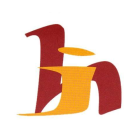1) COTTON (棉)
特性是天然物料,來自農夫耕作的大自然植物。因屬全自然,所以具有透氣作用,對著在身上或用作寢具,都十分舒適。但因屬全天然,當洗水後會易縮水,所以需在裁剪時需預料紙口位。而且若100%的棉料厚一料的話,當清洗後需久一點來風乾。
2) LINEN (麻)
都是天然物料,具透氣、易乾及舒適感覺,但就易縐,需燙直,與棉不同不易縮水。對於衣著有要求的人來說,棉及麻都是優質之選,而且外國女士尤其對麻質的衣服十分喜愛。物料屬輕身,在夏天穿著是十分涼爽的。
3) POLYESTER (人造纖維)
是以化學加工而成的物料,缺點是不透氣,只可說易打理,不需燙。
4) P.V.C (人造皮)
都數用來製造梳化的面層,或是造手袋。好處看似不殺生拿取其表皮,但因屬人工化學加工製成,對環境產生污染及因有化學味道,對呼吸道有問題的人最不佳,唯一好處是易打理及清洗。
5) RAYON (人造絲)
都用作薄紗料,若是厚料的話,不透氣,全身易出汗,唯一是易清洗及快乾。
6) SILK (絲)
屬天然產品,冬暖夏涼,但需手洗及避免陽光長期直照,因會易裂開。若是真的真絲,當用火燒時是會燒著的。所以要測試它是否真絲可用打火機在布的角落火燒。
7) SPANDEX (彈性纖維)
對於不熟悉布料產品的人來說,手感還以為是棉呢!但屬化學加工品,好處是具有彈力。
8) VISCOSE (人造棉)
此物料類似棉,但不透氣,只要用口在布料上吹,就會發現手底感不到有風穿過。
9) WOOL (羊毛)
屬天然從羊身上取得的物料,具保暖作用,但易縮水及難乾,若保存不佳,易受蟲註。
10) Acrylic fiber (壓克力纖維)
乃合成纖維中仿羊毛觸感而研製出最成功的一種纖維,最像羊毛,但沒有羊毛的輕柔,常和羊毛混紡在一起。優點是質輕、蓬鬆、保暖、不縮不皺,比羊毛容易清洗,較不會引起過敏;對多數化學劑有良好抗力,但無法抗鹼及含氯漂白劑的侵害,易洗快乾、不易起縐、不易縮水變形、不怕太陽光照射、不怕發霉及蛀虫,但是不太能吸汗,且容易產生靜電和起毛球。
1) COTTON
The characteristics are natural materials, from natural plants that farmers farm. Because it is all natural, it has a breathable effect and is comfortable to face on the body or as a bedding. However, because it is all natural, it will shrink easily after washing, so it is necessary to predict the paper position when cutting. And if 100% of the cotton material is thick, it will take a little longer to dry after washing.
2) LINEN
They are all natural materials, which are breathable, easy to dry and comfortable to feel; but they are easy to lick and need to be straight and straight; unlike cotton, they are not easy to shrink. For those who have clothing requirements, cotton and linen are good choices, and foreign ladies are especially fond of linen clothing. The material is light and it is very cool to wear in the summer.
3) POLYESTER
Is a chemically processed material,the disadvantage is that it is not breathable. Can only be said to be easy to handle,no need to iron.
4) P.V.C
Both are used to make combed finishes or to make handbags. The benefits do not seem to kill it just take the epidermis, but because of the artificial chemical processing, the environment is polluted and because of the chemical taste, the people with problems with the respiratory tract are the worst. The only benefit is easy care and cleaning.
5) RAYON
They are all used as thin yarns. If they are thick, they are not breathable and they are easy to sweat. The only thing is easy to clean and quick to dry.
6) SILK
It is a natural product, it is warm in winter and cool in summer, but it needs to be washed by hand and avoid long-term direct sunlight. It will be easy to crack. If it is really silk, it will burn when it is burned with fire. So to test if it is silk, use a lighter to burn in the corner of the cloth.
7) SPANDEX
For those who are not familiar with fabric products, the feel is cotton! But it is a chemically processed product. The advantage is that it is elastic.
8) VISCOSE
This material is similar to cotton, but it is not breathable. As long as it is blown on the cloth with the mouth, you will find that the bottom of the hand does not feel windy.
9) WOOL
It is a natural material obtained from sheep and has a warming effect, but it is easy to shrink and hard to dry. If it is not well preserved, it is vulnerable to insects.
10) Acrylic fiber
It is the most successful fiber in the synthetic fiber that resembles the feel of wool. It is most like wool, but it is not as soft as wool. It is often blended with wool. The advantages are light weight, fluffy, warm, no shrinking, no wrinkle, easier to clean than wool, less causing allergies; good resistance to most chemicals, but not resistant to alkali and chlorine bleach, easy to wash and dry, It is not easy to smash, not easy to shrink and deform, not afraid of sunlight, not afraid of mold and mites, but it is not very sweaty, and it is easy to generate static electricity and hair balls.
.png)







.png)



.png)




.png)


